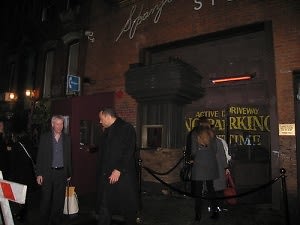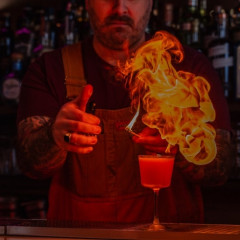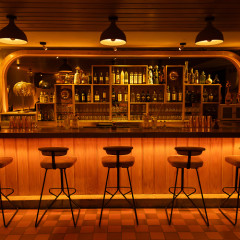 The Bowery's booming restaurant row is hogging all the local press these days. But not so long ago and just one block over, Chrystie Street was hailed as the next nightlife corridor in the city. What went wrong?
The Bowery's booming restaurant row is hogging all the local press these days. But not so long ago and just one block over, Chrystie Street was hailed as the next nightlife corridor in the city. What went wrong?
Sure, the hype descended on Chrystie three years ago, an eon in clubland time. And maybe I shouldn't ask what went wrong so much as what went right. After all, few people want to see West 27th Street or the Meatpacking District airlifted to the Lower East Side. But it's interesting to note that Chrystie Street's rolling stone eventually came to a standstill and is currently gathering moss.
Chrystie made its big splash in early 2007, when The Box joined recent arrivals 205 Club and Home Sweet Home on the strip. The Box was the glossy jewel in the crown. It drew the celebrities and anyone who could afford its outrageous bottle service tabs. But it maintained a whiff of bohemian, artsy cachet with its risque performances.
205 Club came courtesy of Serge Becker (a nightlife fixture who also teamed up with Simon Hammerstein for The Box) and was done up like Warhol's Factory of the Silver '60s. It initially targeted the Dash Snow set--downtown artists, skaters, punks and scenesters during downtown's last gasp. As the club's creative director Aaron Bondaroff explained to New York while sizing up the competition Hammerstein was bringing next door:
“They’re going to do highbrow and we just wanna bring in junkies, faggots, skaters, and weirdos."
Unfortunately both joints quickly lost touch with their target demos. The Box became banker central as the celebrities and trust fund hipsters moved onto Beatrice Inn. And a lot of the drag queens, emaciated gays and rebel artists who'd converged on 205 decamped to Bushwick warehouse parties and the like (and also to Beatrice). The last time I popped in to 205 back in the fall, it was packed with the sort of mainstream Murray Hillbilly crowd you'd expect in the East 30s.
Looking back, The Box was the street's (and its own) worst enemy. Shady reports (a scathing New York profile in particular) emerged about the modern burlesque's backstage antics out-raunching its infamous shows. Many employers alleged harassment at the hands of owner Simon Hammerstein. And some of the outlaw gutter punks who'd found their way to 205 in its early days were turned off by the club's proximity to and association with the shiny, increasingly buttoned-down cousin next door. The hipster center of gravity moved definitively across the East River to Brooklyn (a shift that was already in full swing when 205 opened), only threatening to return when the financial meltdown made pockets of Manhattan more affordable.
Oh, and the recession also likely halted any big new project that could have restored Chrystie Street's luster.
These days, Chrystie Street is pretty quiet. But that's not necessarily a bad thing. Most nightlife destinations that start cool wind up overrun and played out. Chrystie has a homey feel. And speaking of, things can't be too bad when Home Sweet Home is still serving $3 drinks until 8:30 every night.
(Photo Courtesy of eoconn's Flickr)


.jpg)
.jpg)



.jpg)
.jpg)
.jpg)



(6).jpg)
